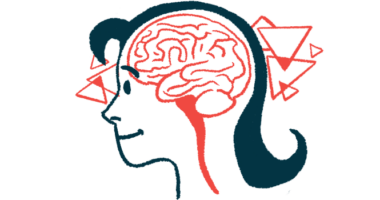Homeostasis and Parkinson’s: Understanding the 2nd Dopamine Center

In my book “Possibilities with Parkinson’s: A Fresh Look,” the insular cortex is described as the second dopamine center. Researchers surmise that the second dopamine center contributes to the nonmotor symptoms associated with the disease and its individualistic presentation.
The second dopamine center is largely responsible for our “felt self,” which is the conscious sensation of, “How do I feel today?” Our body and brain require adjustments to maintain safe and even pleasurable body conditions.
The insular cortex acts as a central hub for processing relevant information related to the state of the body, as well as cognitive and mood states, thereby monitoring the regulatory process. Despite these crucial functions, the insula has been largely overlooked as a key region in contributing to symptoms of Parkinson’s disease.
Unfortunately, this monitoring of regulatory processes can malfunction in Parkinson’s disease. The result is episodic breakdowns in regulatory systems connected to homeostasis. These episodic breakdowns can occur as either an amplification within the regulatory system or a blunting or suppression of the following:
- The sleep-wake cycle (circadian clock) and hyperarousal
- Regulation of body temperature in the heat or the cold
- Thirst and hunger regulation
- The default mode network, or resting “auto brain”
- Impulsivity and emotion regulation
- Histamine, cystine, and dripping nose
- “Felt self” and pain perception
- Postural stability and autopilot body movements (also affected by the basal ganglia)
These eight regulatory system breakdowns are attributed both to insular cortex malfunction and to symptoms associated with Parkinson’s disease. These conclusions are supported by scientific references beyond the scope of this column, so I have posted them on my website.
I’ve suggested that part of the explanation for the individualistic presentation of PD is due to the side effects of our constant use of a broken PD brain. Side effects include sleep disturbances, depression, anxiety, deep fatigue, loss of concentration, and difficulties with motor sequencing, problem-solving, and social skills management. These may be connected to the second dopamine center malfunctions, and damage to both major dopamine centers (the insular cortex and the basal ganglia).
I demonstrate one symptom (among many) that looks like freezing gait, a stutter in my step, tangled feet not ready to walk. It seems to happen specifically when I am in autopilot mode and daydreaming in my head. Mrs. Dr. C says it is the old “can’t walk and chew gum at the same time” syndrome. At that point, something about daydreaming while using autopilot triggers a malfunction in automatic movement, like walking. Suddenly, I am no longer walking safely. If I am mindful of every step, then this malfunction does not occur (most of the time).
This has been described as the “performance affect,” meaning that when we are asked to perform (present in the eyes of others), it changes the level of attention we give to our movement, and thus affects our use of the broken autopilot.
This doesn’t apply only to walking. Any motor sequence can be part of autopilot programming. Mindful movement has become my mantra.
Mindful movement helps when dealing with autopilot malfunctions. I am also learning to deal with the auto-brain malfunction. This is the malfunction of the default mode network in connection to the insular cortex. My perception of it is a combination of a broken record, skipping over and over to see the same thing in my mind repeatedly, and flitting quickly from one topic to another while stuck in the broken record loop.
Without my intentional intervention, this broken record flitting can go on for hours. In my experience, nothing comes from it. It’s not only hours wasted but hours spent using a broken PD brain poorly. My brain is on a strict leash law. I don’t let it go wandering unattended — most of the time. No one’s perfect. I thank God, Mrs. Dr. C, and Bionews (the parent company of this website) for the opportunity to write these columns, which helps focus my efforts on managing PD.
I’m still working on homeostasis dysregulation problems. It is slow going. Training my brain to think differently is a long-term commitment. But if I look at homeostasis dysregulation with a shift in perspective, using a therapeutic holistic approach, I can see the utility of this episodic dysregulation as biofeedback. Being mindful every waking hour of every day, I can make a difference in my quality of life with this chronic illness.
It is as I’ve said, “Show up and lay one brick at a time.” Check back to see where the journey leads.
***
Note: Parkinson’s News Today is strictly a news and information website about the disease. It does not provide medical advice, diagnosis or treatment. This content is not intended to be a substitute for professional medical advice, diagnosis, or treatment. Always seek the advice of your physician or another qualified health provider with any questions you may have regarding a medical condition. Never disregard professional medical advice or delay in seeking it because of something you have read on this website. The opinions expressed in this column are not those of Parkinson’s News Today or its parent company, Bionews, and are intended to spark discussion about issues pertaining to Parkinson’s disease.








Comments
Peter Lee
Thank you for writing and posting this. It helps make sense of some of the problems I exeprience two years post diagnosis, and importantly suggests ways of dealing with these problems. Without knowing the theorectical reason, I have found mindful attention when walking, for example, is most often a workable way of dealing with "auto-pilot" issues. (As an ex sea captain and harbour pilot it reminds me that in tricky situations we would switch from auto-pilot to hand steering.)
Dr. C
Great comments and thanks to Peter, Paul, Monette and Susan for reading the columns and your insight. The support you offer to my research and theories is most appreciated! I will continue to do my best to see if we can work together to understand PD and seek out the possibilities of better lives. ~ Dr. C.
PaulS
Dr C: Many of the symptoms of Parkinson's resemble homeostatic controls, such as tremors, temperature sensations, etc., so you may be onto something. Dopamine is produced in both the brain and kidneys, the latter which are adjacent to the adrenal glands. Noradrenalin is regulated by dopamine, so isn't it conceivable there is a feedback loop the other way, dopamine regulated by noradrenalin, perhaps through the hypothalamic–pituitary–adrenal axis? Keep up the good work and I wish you well.
monette hoffer
I have PD and I find that sometimes when I get up to walk my legs don't move and I have to think about the steps in order to move my legs,they hesitate.
Susan Conklin
This is the best report I have read in regards to actual symptoms I am witnessing in my friend with PD
It is very helpful in not only my understanding what is physically going on in the brain, it will give me correct wording as I talk her through those moments of asymmetry . She is brilliant (180 IQ), former biology teacher, so it is important to me to be helpful on terms she relates to. Thank you for clarifying so much of what is going on.
Dr L
Dr. C.
The brains of persons with PD are not “broken” as you repeatedly state, but in fact show varying degrees of functional impairment from zero and minimal to severe depending on level of loss of dopaminergic neurons. Loss of these neurons begins perhaps at birth in some but certainly decades before classic clinical symptoms begin with a long premonitory phase, sometimes manifesting as depression, constipation, loss of smell and other subtle non-specific changes. At what point in this continuum does the brain become “broken “? Although Webster’s Dictionary lists a secondary definition of broken as “damaged or altered”, with the primary definition being “shattered”, many of us with PD find the negative term “broken brain” demoralizing and discouraging as we work to optimize performance and delay progression, with exercise, socialization, medication, DBS, and other therapies. We must stay positive and consider ourselves as functional, whole and contributing members of society. We are all unique and still the same people but with a bit of PD!
Now, let’s talk science! Dr. L
Dr.C.
Hi Dr. L ~ Thank you for your comment. I appreciate your sensitivity to the term "broken brain". But I like the strength of the term. It is a constant warning sign reminding me to do the work I have to do every day to prevent me from crossing the threshold. When I do cross, I'm spinning and my brain and my body are not functioning. I interpret these malfunctions as temporarily "broken" -- a flicker in my system. When I don't attend to these flickers, they compound and accelerate. The "broken brain" for me are these compounded and accelerated dysfunctions. I hope you will continue to follow the columns as I develop and share the scientific research that is out in the professional medical community. Thanks again for reading the columns.
Ellie
Hi Dr. C. I am a care partner to my husband who has been on our PD journey for eleven years. It is important to maintain a truly positive attitude so in that regard, I agree with Dr. L. However, I have to strongly support you in the "strength of the term" "broken brain" because it does force one to be aware, to intentionally think, intentionally move and intentionally communicate in order to build new neural pathways. WE DO BELIEVE IN exercise, diet, proper medication (being positive is also included as a medication for us), acquiring knowledge of this disease and INTENTIONALLY adhering to a schedule so that we can slow the progression of this journey. We have found that by doing all these things we can minimize the "roar" of PD down to a "hum" which only takes up about ten percent of my husband's thoughts during any given day, leaving the rest of the time for LIVING an excellent quality of life. Dr. C thank you for writing in layman's terms!!